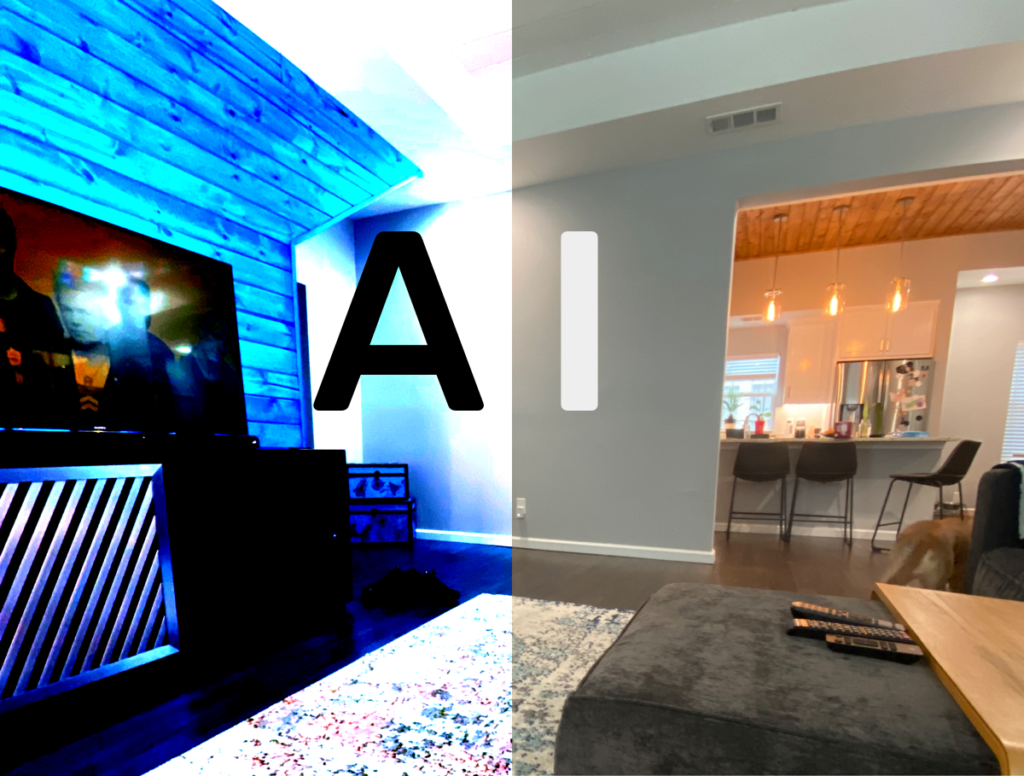Where is AI in Home Automation?
By Kai Quizon,
When you buy through our links, we may earn an affiliate commission.
Artificial intelligence built Home Automation as we know it today, but how is it actually used?
Lately it seems like every major technology development surrounds OpenAI’s newly unveiled conversational linguistic model called Chat-GPT. This impressive program was trained on a massive amount of human-written content, making it capable of composing complex, convincing responses to a wide array of questions. Technical, creative, or informative, Chat-GPT has covered it all.
AI is capable of much, much more than holding a conversation however! The smart home revolution was built on the back of the rising artificial intelligence wave of the 2010s. While simple home automation tasks, such as controlling a light from your phone, does not require an artificial intelligence, complex tasks and more organic user interfaces rely on offloading decisions to an AI.
Data, Data, Data!
At the heart of any artificial intelligence system is data. Without a significant data set, AI is simply a fancy program running on very expensive servers. AI uses a process called machine learning to intake data and train the system. The program uses this data to produce what essentially functions as a template. Then, the program can compare any new data to the template to classify it.

Machine learning can take many forms. In fact, you probably contribute to machine learning much more often than you would think! Every time you complete a CAPTHCA [I am Not a Robot] box that asks you to identify an image, you are helping train an artificial intelligence! It’s rather ironic that to prove we are not a robot, we must train a robot to be like us.
Object Detection (AKA Machine Vision)

One of the earliest applications of artificial intelligence is commonly seen in smart doorbells and security cameras. When your Ring Doorbell tells you that there is someone at your door, or your Nest Doorbell tells you that your partner has just walked up, an artificial intelligence is at work.
In this case, called machine vision, our data “template” is a set of pictures of a particular object or face, while our new data is the live video feed from the smart camera. Some machine vision intelligences in this space have become so intelligent that they may need only a single picture to create a template!

At the cutting edge of machine vision is a new feature called preventative threat prediction. This feature uses machine vision and complex data modeling to warn a user of a potentially dangerous situation. For example, your smart doorbell may send a notification when it sees an unknown person loitering near your door or tampering with your doorbell.
Speech Recognition

Every time you summon a smart assistant with a “Ok, google” or “Hey Siri” you are using a well trained artificial intelligence program that knows your voice! This type of artificial intelligence uses an algorithm based on a mathematical process called a Fourier Transform to take your natural voice and turn it into information that the intelligence can understand.
Here, the template is a set of frequencies that we train the intelligence on, and the new data is the incoming audio signal from a microphone. If you’ve ever wondered why your phone doesn’t recognize you when you speak in a head tone or with a stuffy nose, its because you have changed the frequency of your voice!
Speech Recognition artificial intelligence is also employed in a variety of speech-to-text programs. For example, your Arlo video doorbell can be networked to leave text voicemails on your phone when someone speaks into it, similar to the voicemail feature on modern iPhones.
Organic Automation Tasks
Finally, and most importantly, AI forms the fundamental backbone for advanced and organic automation tasks. Let’s take an example:
Every night when you get home from work in the summer, you turn the air conditioning down, preheat the oven for dinner, and turn on your favorite smooth jazz playlist. Over time, an intelligent assistant catalogs this behavior, its frequency of occurrence, and potential trigger for this routine. One day out of the blue, your intelligent assistant starts to suggest to preheat your oven and turn down your air conditioning on your drive home.
This is perhaps the most powerful application of artificial intelligence in home automation. Tasks that previously would have required a human programmer to lay them out now can be built over time by an AI! This means more complex automations are more accessible to all leading to increased efficiency, decreased energy consumption, and increased user satisfaction!
Home automation has become fully reliant on a variety of artificial intelligences to create the seamless transitions and automations we take for commonplace today. While we may not have J.A.R.V.I.S. quite yet, we do have a variety of highly sophisticated programs capable of keeping us safe, healthy, and environmentally friendly in our day to day life.

